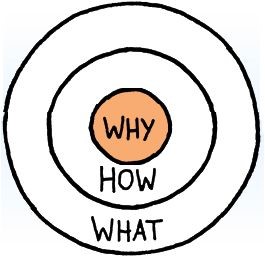3 min read
Personal Leadership Development Plan: Helping Teams Under Stress
IS YOUR TEAM UNDER STRESS?
The following is another lesson from my coaching play book about a leader whose team was...

Have you ever lead a team of talented professionals and felt concerned that they were floundering because they have too many competing priorities?
Most people are part of more than one work group or team, and are hit with having to make some hard choices about where and how to spend their time. They are faced with the pressure to perform within all of their teams, yet don’t know how to decide what should be their top priority.
Creating a way to help team members prioritize their commitments doesn't have to be that daunting.
There are great resources available that you can use to help your team members know what is important and be inspired to perform their best. With the understanding of the “Why” at their disposal, you could easily create an engaged and productive team -- all without fancy team building programs, huge time commitments, or expensive incentives.
I’ll walk you through a few proven resources you can use with your team..
If your team is not clear about why your team exists within the greater organization this translates to a big distraction for your team. The sooner you get everyone on the same page about the “Why”, the sooner your team will make better decisions for how to do their part and contribute higher value.
A go-to resource to guide you in this process is Simon Sinek, author of the bestselling book Start with Why, and the second most popular TedTalk. According to Sinek, the fundamental difference between the "Apples" of the world and everyone else is that they start with "why." To explain this concept, Sinek has developed what he calls the "Golden Circle," that has three layers:

A great way to use this with your team is to schedule a team meeting and have everyone watch the Ted Talk together. Then facilitate a dialogue about their understanding of why your team exists. If your team is not aligned on the "why" you will know that you need to spend more time on this with them. If they are clear, then move on to the next step.
After you've clarified the Why, How, and What for your team, help each person get clear about their intrinsic values that inspire them to do what they do.
Values are traits or qualities that represent your highest priorities and deeply held driving forces. We bring our deeply held values and beliefs to work every day. Values guide our priorities and inform us how to behave.
Identifying the core values that you hold most closely and that form the foundation for your decision making and establishing priorities can be difficult.
I find it’s best to start by providing a list of values to choose from and do a few sorts to get the list down to a Top 10. Then challenge each person to select their top 3 they wish to focus on for the year ahead.
A great resource you can use is this core values list pulled together by a great blogger, James Clear, with more than 50 common personal values.
Then, in one-on-one conversations, help your team members clearly see the link between their core values, their day-to-day activities and the grander purpose of the team or organization. This step is critical to guiding them how to improve team performance.
Leaders I’ve seen really succeed at helping their teams with prioritization built an action plan with the team based on their “Why” and core values. One team’s mantra was “Shine” and the plan focused them on ways they could demonstrate their value and be recognized as valued business partners. What gets in your action plan gets attention. For values to be lived, they need to be nurtured. Decide on how you will know that the clarity of the purpose and values for your team is in fact, improving the team’s performance.
Last, but certainly not least, If you’ve taken the steps above, making values stick is going to hinge on the quality and frequency of your communication within the team and in ongoing individual conversations. Competing priorities pop up all the time. Periodically revisiting the "Why" and core values of both the team and individuals is a great way to refresh your focus and help them realign their priorities, not to mention help them stay inspired.
And you know what the best part is? Next time you want to help your team members prioritize their commitments, having these values clarified won't make the conversation feel quite as daunting and you can watch your team’s performance improve.
What values do you and your team share? Tell us below!
Nov 4, 2021by Diane Ring
IS YOUR TEAM UNDER STRESS?
The following is another lesson from my coaching play book about a leader whose team was...
Nov 3, 2021by Diane Ring
There is nothing like a sudden change of executive leadership to trigger all kinds of personality dynamics in a team....
Nov 2, 2021by Diane Ring
More than 70% of executives are not effective at supporting new-to-role peers and managers according the Corporate...